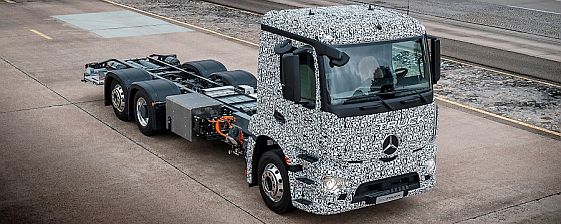Cleaner longer distance transport
Mercedes-Benz Urban eTruck, Photo: Mercedes-Benz *

In New Zealand electricity is the one existing fuel that is low cost, predominantly clean, potentially available in the volumes required to power the transport fleet, and has an existing national distribution network. BEVs and PHEVs are becoming available in volume at prices that make their lifetime cost competitive in New Zealand with fossil fuel vehicle based transport. When coupled with clean electricity they will reduce emissions at little, if any, increased life-time cost. They will be significantly cheaper and less risky than liquid or gaseous biofuel alternatives. Better charging technologies will extend the ability of EVs to handle longer distances, and NZ has relevant research expertise in this.
For these reasons, some of which are peculiar to New Zealand, shifting to EVs for low duty cycle transport is relatively low risk. Over time it would not be unreasonable to see half our road transport fleet replaced by them.
The balance of the transport fleet, the longer distance component (including road, rail, sea and air), will not be so clear-cut. By our location NZ is particualrly exposed to the risks here, particualrly in trade and tourism.
Large scale reductions in emission through cleaner fuels appear costly and the best solutions uncertain. Our low population density works against high capital cost solutions like electrification of longer distance transport. In some situations there will be the potential to recover the cost from customers willing to pay a premium for clean transport. Also, demand for dirty fuels can be reduced by continuing to improve efficiency and substituting low fuel use alternatives to transport. These two approaches are likely to be the most cost effective ways to reduction emissions over the next 10 – 20 years.
But there will be some shorter-term prospects for alternative fuels (perhaps, for example, biofuels for marine) and we can work on reducing the investment risks in longer-term post-2030 opportunities. Demonstrating lower cost, cleaner, engine/fuels combinations using indigenous biomass based fuels would be an example, along with developing the supply of the low cost feedstocks that will be required.
Thus research into the options our long distance transport sector has to reduce emissions; the uncertainties and risks in that; and, where indicated, into de-risking key developments to make them investable, will be of significant value for New Zealand.
* European LH drive model. With permission, no relationship implied.
